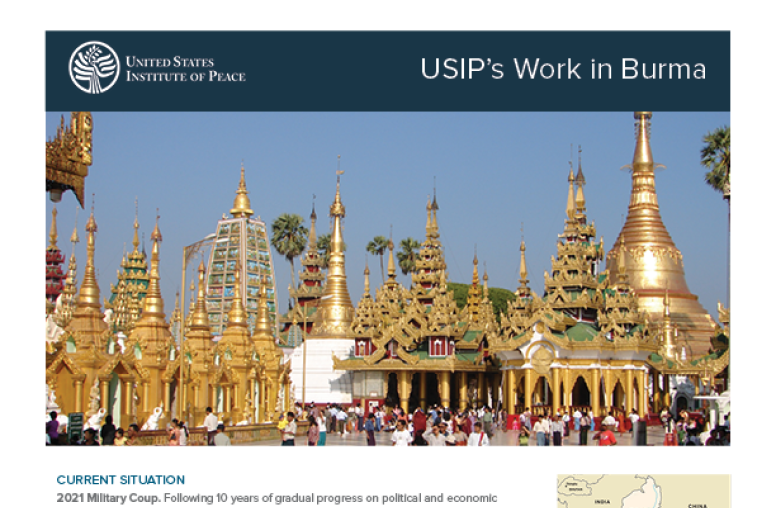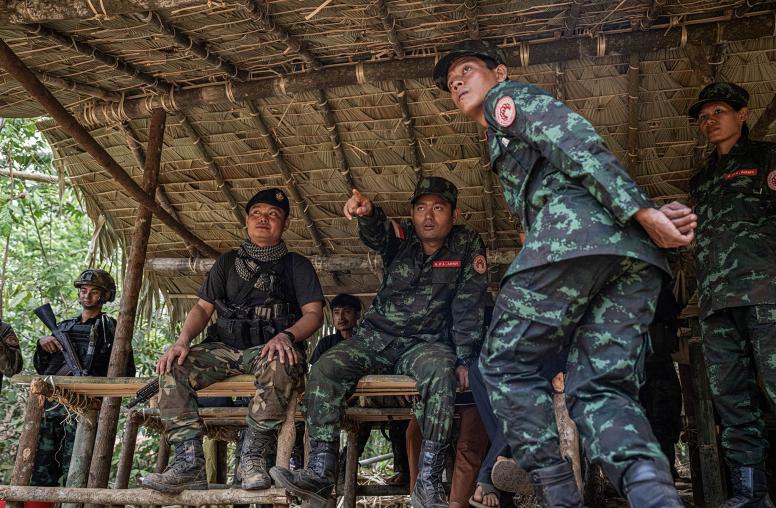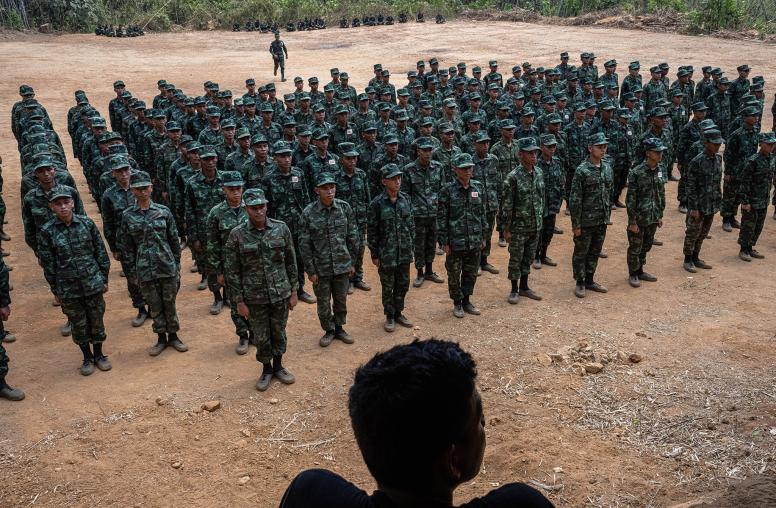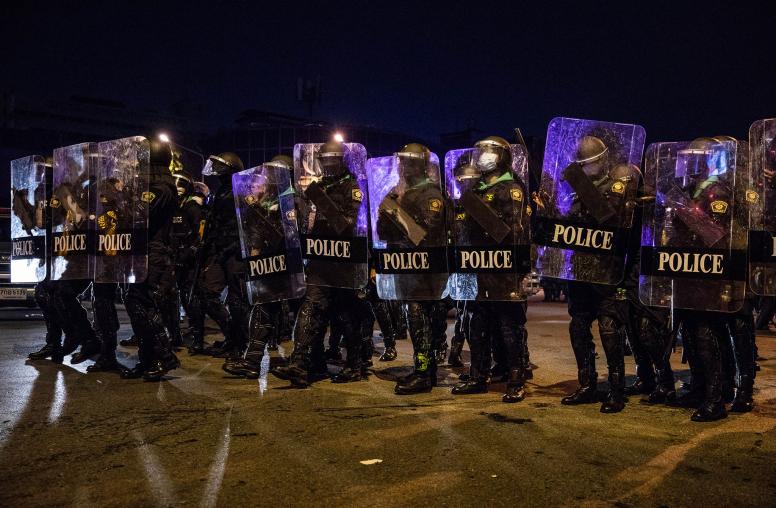Q&A: Myanmar’s Peace Process, Suu Kyi Style
On the Issues with Vanessa Johanson
Four days of talks last week restarted Myanmar’s peace process almost a year after a Nationwide Ceasefire Agreement was signed by some but not all of the country’s armed groups. The process, known as the 21st Century Panglong Conference, or Union Peace Conference, is intended to convene every six months and aims to end the decades-long conflicts between and among the Myanmar army and an array of rebel groups. Vanessa Johanson, the Myanmar country director for the U.S. Institute of Peace, examines the results.

Nobel Peace Laureate Daw Aung Sang Suu Kyi, whose National League for Democracy (NLD) won control of parliament in November, has made the country’s peace process one of her top policy priorities. The general election was the first in Myanmar since almost 50 years of military rule ended in 2011. U.S. officials have said they’re particularly looking to see whether the peace process going forward will be inclusive of ethnic minorities and others.
Was the conference a success? In what ways did it further peace in Myanmar, and in what ways did it fall short?
Overall, the conference was positive. It puts Aung San Suu Kyi’s stamp on the peace process, and signals the NLD government’s commitment to pursuing ceasefire and political dialogue seriously, and in their own way. More armed groups participated than at any previous talks in the process.
In reality, however, the conference may not have advanced the major challenges—ongoing fighting in the northeast, and the fact that 13 armed groups have not yet signed onto the Nationwide Ceasefire Agreement, or NCA. Finding a solution acceptable to both the government and three groups—the Ta’ang National Liberation Army, Arakan Army and the Myanmar National Democratic Alliance Army—is a particular challenge going forward.
What surprises arose during the conference?
Of the eight speakers at the huge opening ceremony, two were from armed groups, including one that had signed the NCA and one that had not. Allowing non-signatories to speak signaled genuine efforts by the government towards greater inclusiveness. But Burma’s largest armed group, the United Wa State Army, walked out on the second day of the conference, citing unequal treatment by the organizers. Whether due to deliberate policies or logistical flaws in the conference organization, the walkout is another indicator that much work is still to be done.
How inclusive were these talks?
They were significantly more inclusive of armed groups and had buy-in from the army, the government, political parties and the international community. However, only 13 percent of participants were women, and the Alliance for Gender in the Peace Process reported that gender and women’s participation was mentioned in only about a third of speeches over the four-day conference. Much more will need to be done to include more women in future meetings and take into account gender considerations. Civil society organizations also had almost no voice in this meeting.
What is the significance of the conference for Aung San Suu Kyi’s NLD-led government?
Burma’s complex peace process now firmly belongs to the NLD government, and this conference placed it in the historically weighty framework of the 1947 Panglong conference led by Suu Kyi’s father, General Aung San. That connection suggests a commitment to equal political and economic rights between the majority Bamar and minority ethnic groups. By ensuring greater inclusiveness and international involvement, the government likely hopes to earn greater trust with the armed groups. At the same time, the NLD government is careful to maintain the delicate power balance between the new civilian government and the still-powerful army.
What happens with groups that did not attend?
Three armed groups didn’t attend, and they are three of those that have been in recent conflict with the government. More stringent preconditions had been proposed for their participation. There will need to be ongoing negotiations with them and with the Wa for the process to make strides forward, and for a reduction in conflict in the northeast.
What are the next steps?
The Nationwide Ceasefire Agreement, signed in October 2015, kicked off a national political dialogue intended to lead eventually toward constitutional reform and federalism. Another Union Peace Conference will be held in about six months. In the interim, a new Framework for Political Dialogue needs to be agreed, and it is expected that new joint dialogue committees will be developed and some progress made on key political and security discussions in those committees.
Meanwhile, only about a third of the armed groups, representing a quarter of all of their troop strength—have signed the nationwide agreement and can participate in political dialogue. Conflict continues, largely between the army and non-signatories, but also occasionally between the army (and its proxies) and signatories, and among the armed groups themselves.
Even in areas where groups have signed on, many elements of the 33-article agreement are yet to be implemented. The peace process will achieve its goals if it can bring about an effective, monitored ceasefire and an inclusive political dialogue that leads to long-term change.
What has been the international community’s role in these talks?
The international community has supported the peace process since it was conceived of by the previous quasi-civilian government in 2011, through funding, technical assistance and political support. However, Burma’s peace process is locally owned and led, and the international community has not, for example, played a mediating role or been asked to provide ceasefire-monitoring support. Diplomats have observed a number of talks, and several governments and multilateral bodies such as the European Union and the United Nations signed the Nationwide Ceasefire Agreement as international witnesses.
Going forward, it is likely that international financial support will continue, particularly through a newly-established multi-donor trust fund, the Joint Peace Fund, and there will be ongoing political support. China, Burma’s largest neighbor and investor, has played a more constructive role in recent talks, and provides some funding to the peace process.



